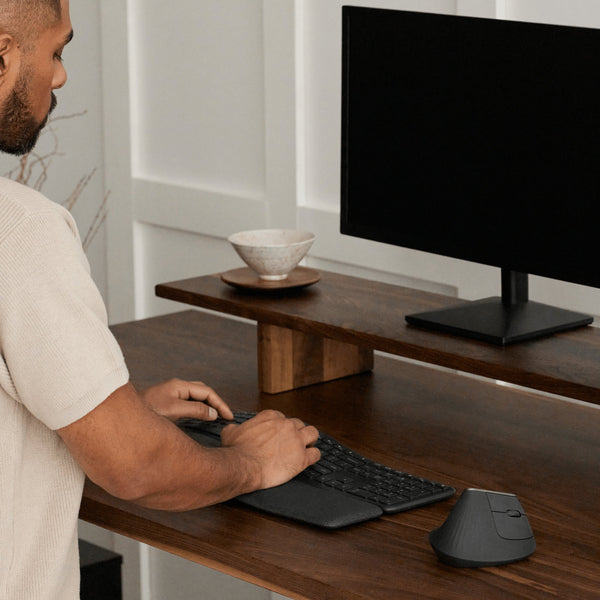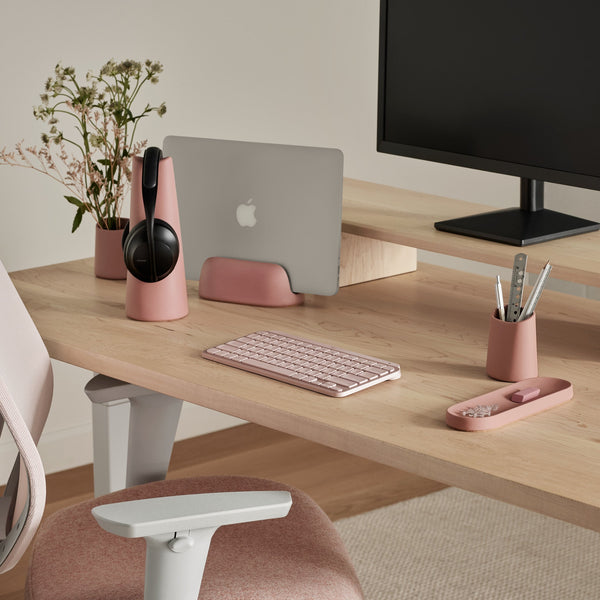In the past few weeks, countless people around me have sent me links to articles that dismiss the benefits associated with working at a standing desk. To kick things off, a lot of these articles have a single purpose; generate buzz and website visitors. What better way than to be contradictory?
Standing desks are bad for you... so are vegetables
Let me digress a little. Did you know that broccolis are also bad for you? At least that’s what many articles state (it has something to do with toxicity). Coconut oil was all the hype for a few years, until recently when an article against that trend went viral on the internet. The real question is, who and what can we trust?
Trust yourself
I’m a huge believer in testing, measuring, and optimizing. To give you a better example, the next time a trend like coconut oil pops up, run a few tests to benchmark your current state before trying anything new. Try to run as many tests as possible such as getting a complete blood profile, measure your sleep cycles, notice how you feel during your training sessions and the rest of your day, etc. After you have a baseline, start adopting the new trend while keeping everything else the same (nutrition, supplements, sleep, habits, etc.). After a few months, run the same tests you initially took (complete blood profile, sleep cycles, performance, etc.) and compare your results. That should give you a pretty good idea of how your unique body reacts to certain “trends” instead of listening to Doctor Google.
What about standing desks?
Now, back to standing desks, are they good or bad for us?
First, let’s look at boring statistics:
But really, are standing desks healthy?
Can I give you my honest, non-scientific opinion? We sit on average 13 hours per day and there is absolutely no denying the health risks associated with that.
Let’s take a quick look Gerry’s typical day (Gerry’s fiction, but we still love him):
6:00 Wake-up, shower, and eat breakfast
7:00 Leave for work, of course there’s traffic in Montreal. Gerry sits for 1.5 hours in the parking lot of Decarie
8:30 Arrive to work, grab coffee and sit at his desk
12:00 Finally, lunch. By this Time Gerry has spent roughly 3 hours sitting at his desk (I give Gerry the benefit of the doubt for the other 30 minutes. He might have gone to the bathroom a few times).
13:00 Back to his desk after eating lunch for roughly 1 hour in a seated position
14:00 After 1 hour of working at his desk Gerry has a meeting with his supervisor. They sit in the meeting room and go over the sales quotas for 1 hour
15:00 Back to his desk for another 1.5 hours until he punches his card to leave the office
16:30 Gerry sits in traffic for another 1.5 hours to go home
18:00 Arrive home, cook diner
18:30 Eat dinner with the family, sitting for 30 minutes
19:00 Gerry’s wife forces him to walk the dog for an hour
20:00 After a quick shower, he sits in front of the TV for 2 hours to watch 2 episodes of Game of Thrones.
22:00 Sleep
Total sitting time: 13 hours
Obviously, we each have our own routines. Maybe you take public transportation, which requires you to walk a little more. However, it’s safe to say that you probably sit for 10 to 13 hours every day. How about the other 11 hours in the day? Well, you might exercise, you might cook, but most if it is spent inactive in bed. Unfortunately, sleep is not something you want to sacrifice to combat your lack of movement throughout the day.
4,004 hours of sitting per year
How did I arrive at this number? I like to keep things simple; 13 hours/day for 5 days = 65 hours. Add 6 hours of sitting/day on the weekend (we probably sit more than that, but let’s be conservative) = 77 hours/week. Multiply that by 52 weeks = 4,004 hours of sitting per year. How about once you celebrate your 10th year of sitting at a desk? That equates to 40,040. Let’s not even go to your 20th or 30th work anniversary!
Now I don’t need a PhD to figure out that we sit way too much. The worst part is that we can spend $3,000 to buy the best ergonomic chair in the world and it will only provide a quick relief. It does not help in resolving the underlying cause of the lifelong disease of sitting. Let’s face it, we all end up sitting awkwardly, hunched over and/or bent to one side or the other, regardless of our chair. We just weren’t built to sit for that long. Don’t get me wrong, a good ergonomic chair is a good investment, but it only goes so far.
In the same spirit of keeping things as simple as possible, here’s what I can easily figure out when looking at the numbers above:
- Our blood flow decreases, which to me is the most detrimental aspect. This leads to a loss in productivity and energy because there’s less oxygen that flows to our brains (oxygen is delivered through our blood) and it leads to long-term cardiac issues.
- Sitting for that long every day guarantees we’ll have back pain at some point in our lives.
- Our muscle activity basically shuts off, which means we burn less calories, which means we should probably eat less chocolate, which means life sucks! Click to tweet this quote
- Another important issue that isn’t really talked about in fancy studies is the loss in mobility. When we sit, our body forms a 90-degree angle at our hips. If we stay in that position for prolonged periods of time, our muscles will shorten. Do you ever feel like your hips are tight when you get up after having sat for a few hours? You kind of walk like a penguin for the first few steps until your hips loosen up and you can start walking like a normal human being again. That’s a bad sign. Compound that tightness over a lifetime of sitting 10-13 hours per day and you have yourself a formula for disaster. The loss in mobility at our hips will also increase the tightness and pain in our backs. Talk about a vicious cycle!
Sitting at a desk is slowly killing us
In case you're not convinced yet, here are a few more stats showing how dangerous sitting for prolonged periods of time is to our health:

A once-size fits all approach to work
Working standing at a sit-stand desk is liberating, but having the freedom to adjust the height of our desks to our own unique bodies when sitting is also absolutely crucial for our long-term health. This part isn’t sexy enough either to be mentioned in the hyped-up studies. The one-size fits all approach that desk manufacturers have taken in the past must end.
Pretty much every single desk that isn’t a sit-stand desk has a standard height of 30”. Keeping things simple, it’s easy to figure out that there’s something terribly wrong with that. Some desk workers are 5 feet tall while other are 6 feet 6 inches tall! How can we expect both people with such a height difference to work at the exact same desk? That is however, the expectation traditional desk makers have.
These people then must adjust their chairs to fit properly under their desk. The person at 5 feet tall will have to raise his/her chair so high that his/her feet probably won’t even touch the floor, which is terrible for his/her body. The person that is 6 feet 6 inches tall will have to lower his/her chair all the way at the bottom, which means his/her posture is way off of what it should be when compared to a perfect ergonomic posture. If we apply the same principle of compounding these effects over a 10, 20, 30, and even 40-year period, we quickly realize that this approach needs to change.
Everything in our lives is adjustable to us, why should a desk be any different? We spend most of our lives at a desk, shouldn’t that be the most important item to be adjustable? Click to tweet this quote
Back to the initial question, are standing desks actually bad for you?
Yes! Fixed-height standing desks are terrible for you. It is however very important to differentiate fixed-height standing desk from adjustable desks. A lot of studies stating that standing desks are bad for us used fixed-height standing desk, meaning that instead of working for 8 hours sitting at your desk you work for 8 hours standing at your desk.
Standing at your desk for 8 hours is terrible for your health, not to mention the fact that you won’t have the ability to adjust the height of your desk to your proper ergonomic position. I should know, I started my professional career at a fixed-height standing desk, a self-made version which pushed me to launch ergonofis in the first place. Here’s how it all started
What you want instead is a sit-stand adjustable desk. A desk that allows you to work in the perfect ergonomic position, whether your 5 feet tall or 6 feet 6 inches tall, whether you’re sitting or standing. What you also want is to alternate between sitting and standing throughout your workday.
Going back to the basics
I sincerely hope that this article debunks a few hyped-up myths that you might have read on standing desks. At the end of the day, I think we should come back to the fundamentals and keep things simple. We spend most our lives at work, we absolutely need to optimize that time both in terms of health and joy. We need to find a way to move a little more every day and we need to adopt ergonomic postures as we work. Sit-stand desks definitely have their place in today and tomorrow’s workspaces.
Samuel Finn
Co-founder @ergonofis
His motto: learning a bit more every day






Leave a comment